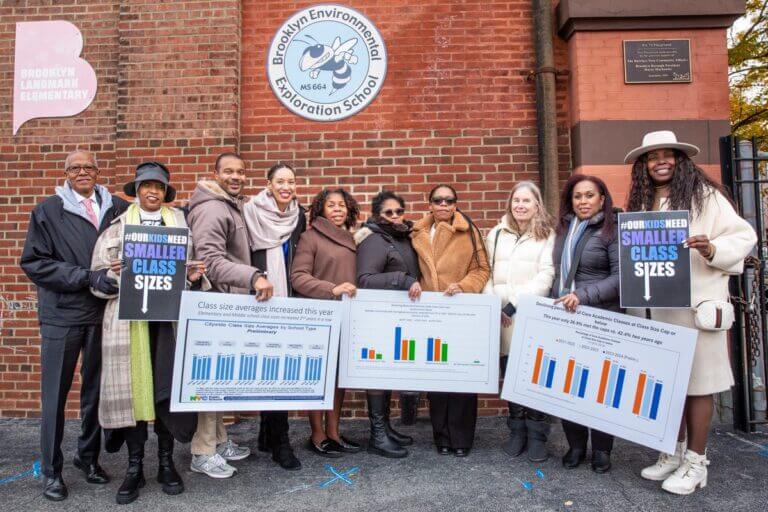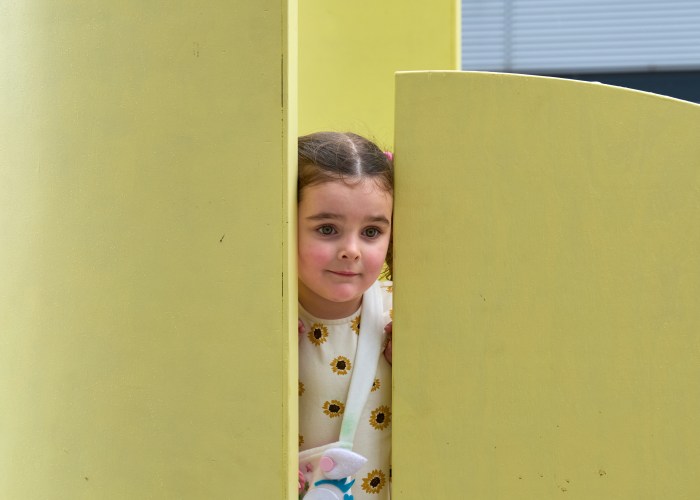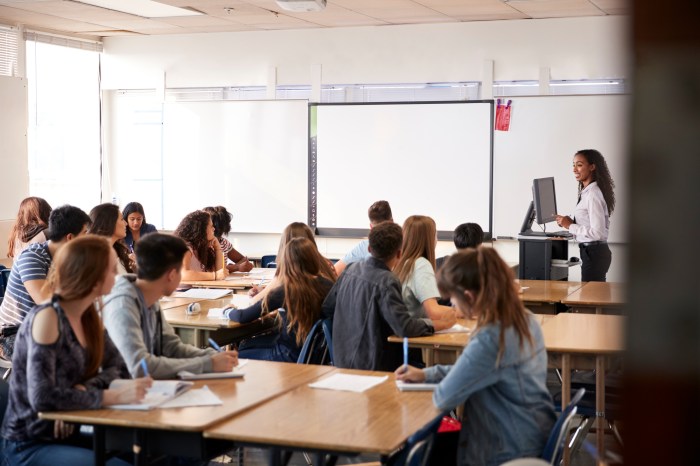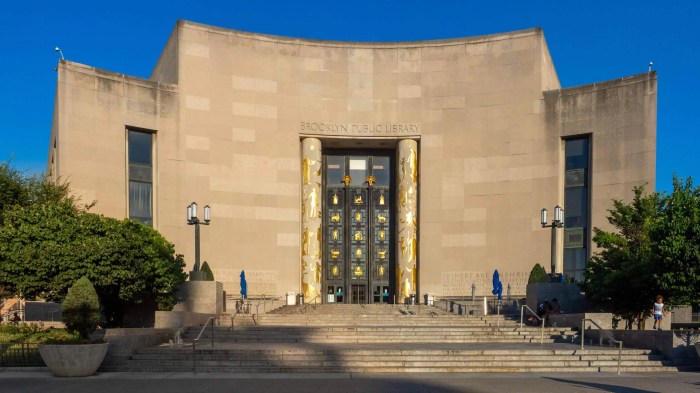More than 300,000 students at New York City’s “high-need” schools are currently enrolled in oversized classes, according to the United Federation of Teachers, despite the city’s assertions that those schools meet legal class size limits.
Michael Mulgrew, president of the UFT, gathered with elected officials, parents, educators, and advocates at the Brooklyn Landmark School in Ocean Hill on Tuesday to share the findings of a new union survey, which indicated that hundreds of classes in Title 1 schools have more students than are allowed by state law.
“Claiming these schools have no overcrowding problem is just one example of how the city is working to undermine the new class size mandate,” Mulgrew said in a statement.
New York State’s class size law, which was signed by Gov. Kathy Hochul last year, placed firm caps on class sizes for different grade ranges. Those caps are being rolled out over the next five years, with class size limits being applied to 20% of classes each year until 2028, when all classrooms should be in compliance.
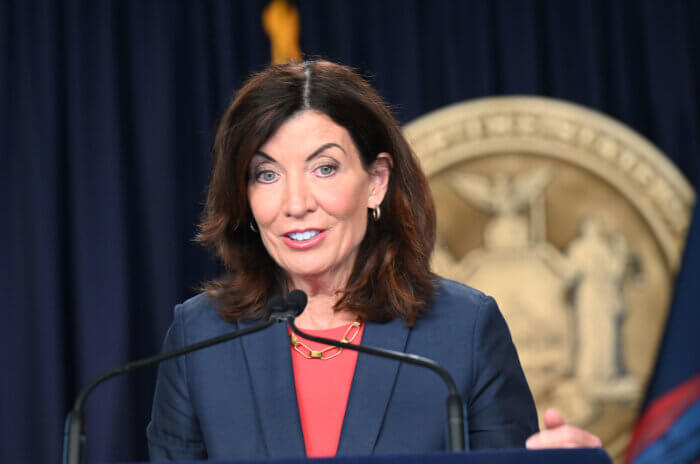
The law prioritizes schools that serve populations with high poverty levels.
According to the UFT survey, at least 50% of classes across 665 Title 1 schools – including dozens in Brooklyn — exceed state law limits for the current school year. Consequently, more than 322,000 students in these schools are in classes larger than what the state law permits. In 40 of these schools, every single class breaches the class-size limit.
Overall, 97% of New York City’s 1,267 Title 1 schools have at least one oversized classroom.
The overcrowded classrooms are spread across every borough. At the Brooklyn Landmark School, where Tuesday’s press conference was held, eight out of 15 total classes are oversized, according to the UFT report, and 77% of the school’s students live below the poverty line.
The Executive Director of Class Size Matters, Leonie Haimson, said average class sizes have increased across all grade levels in the past year.
“It’s been 536 days since the class size law was approved by the legislature, and 438 days since it was signed into law by Gov. Hochul, who also gave the DOE an extra year to comply,” Haimson said.
The legislature allocated an additional $1.6 billion to aid in meeting the class-size reduction goal. Hiring enough teachers to handle a higher number of smaller classes will cost the city an estimated $1.3 billion, plus billions more for the construction of more space to accommodate those classes.
“Far more than 300,000 students in high-need NYC schools are trapped in overcrowded classrooms, directly undermining their learning opportunities,” said Zakiyah Shaakir-Ansari, Interim Co-Executive Director for the Alliance for Quality Education.
However, Department of Education Director of Media Relations Nicole Brownstein said that high-need schools have some of the smallest class sizes in the city.
“It is very clear and has been demonstrated by multiple independent analyses that the districts with the most classes over the caps are in the city’s most affluent communities, which takes resources out of schools with the highest needs,” Brownstein stated.
According to DOE analysis, the department is in compliance with current class size restrictions, with 40% of classes citywide coming in below the mandated caps for this year. In School District 23, which includes the Brooklyn Landmark School, 73% of classes meet the newly mandated caps.
Multiple independent analyses, including reports from the IBO, Chalkbeat and the Urban Institute align with the DOE’s findings.
Brownstein’s analysis also notes that 62% of classes in the highest-need quarter of schools are under the caps, compared to 25% of classes in the lowest-need quarter of schools, highlighting a discrepancy in compliance across different school demographics.
“We are continuing to work with the Class Size Working Group to solicit feedback from the community on the tradeoffs and challenges inherent in the newly mandated class size caps,” Brownstein added.
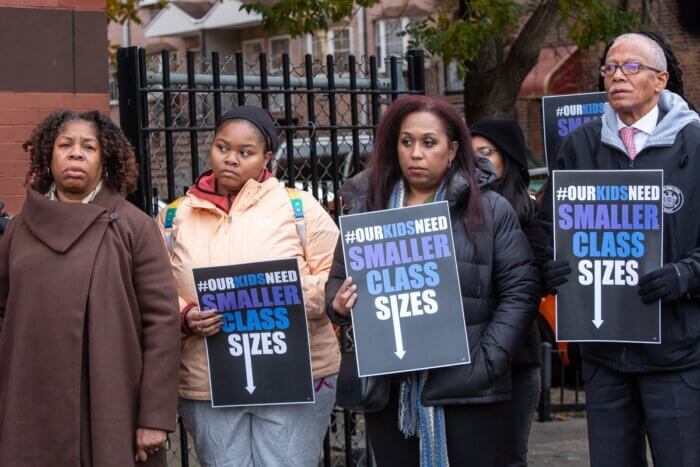
Discussions persist on balancing resources between schools in affluent neighborhoods and those serving higher-needs populations as the city moves toward full compliance with the law by the 2028.
Mulgrew remains optimistic about addressing the issue.
“New York City now has the opportunity to reverse a historic injustice and to provide the benefit of smaller classes to hundreds of thousands of public school children,” he said. “An initiative that will pay educational and economic dividends for decades to come.”



